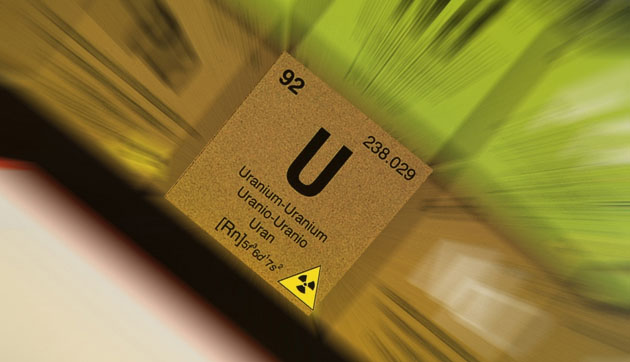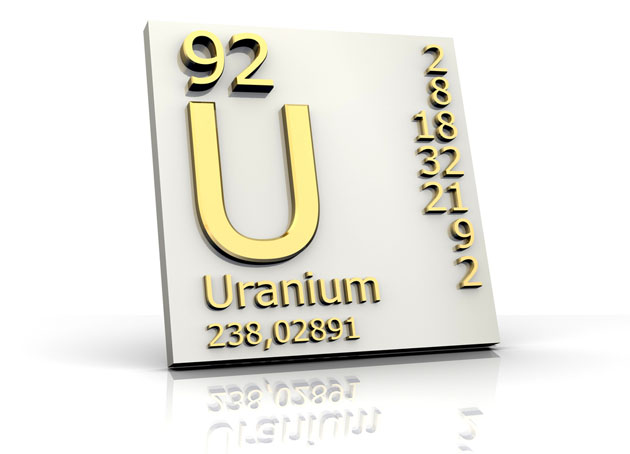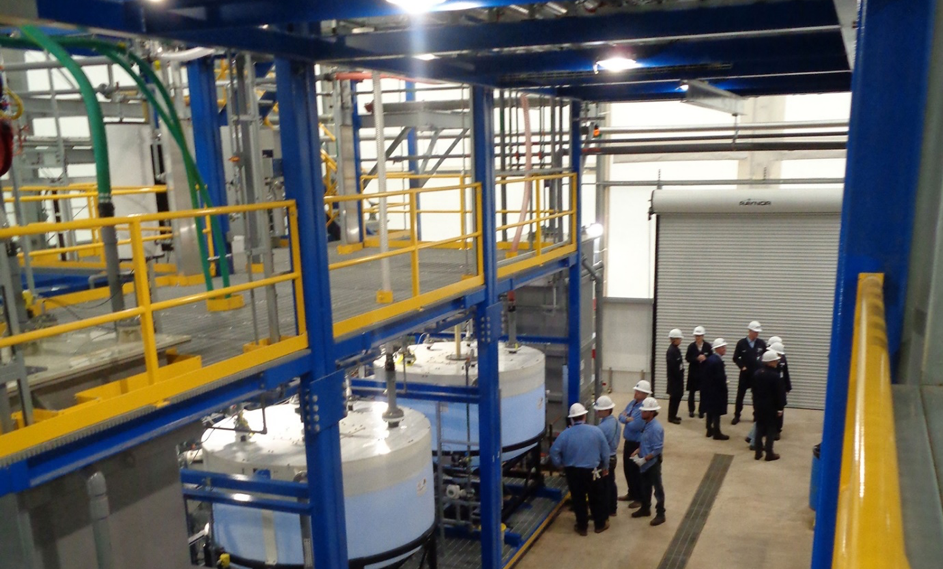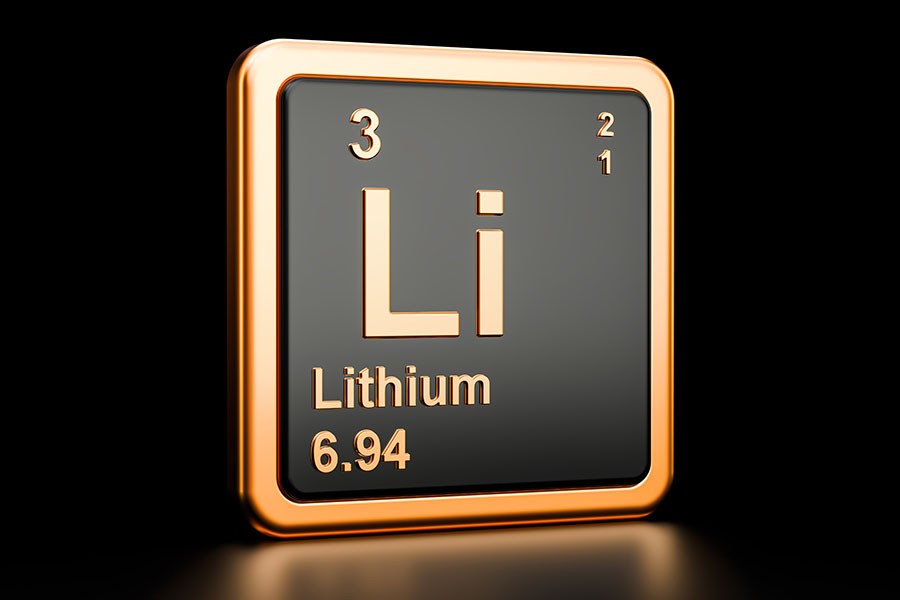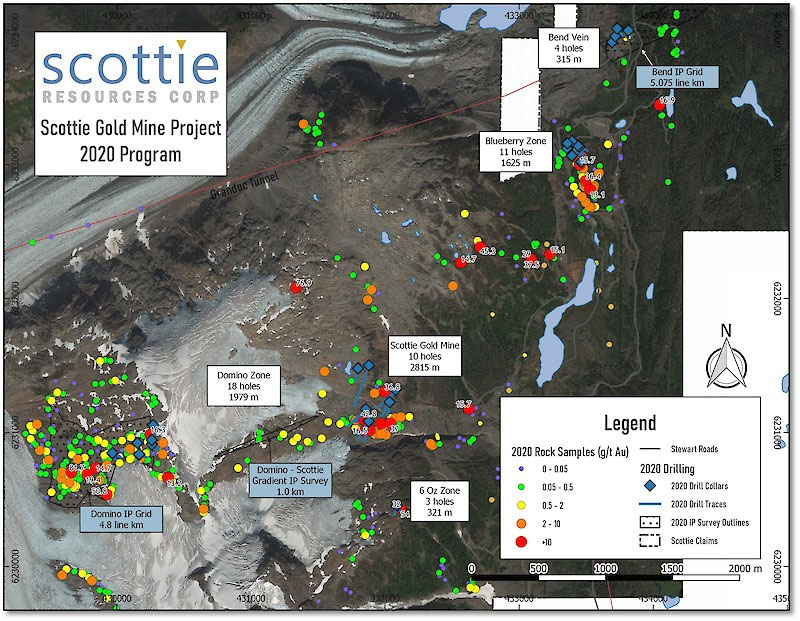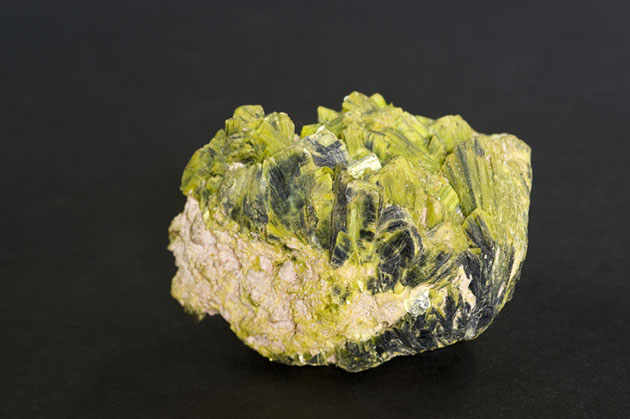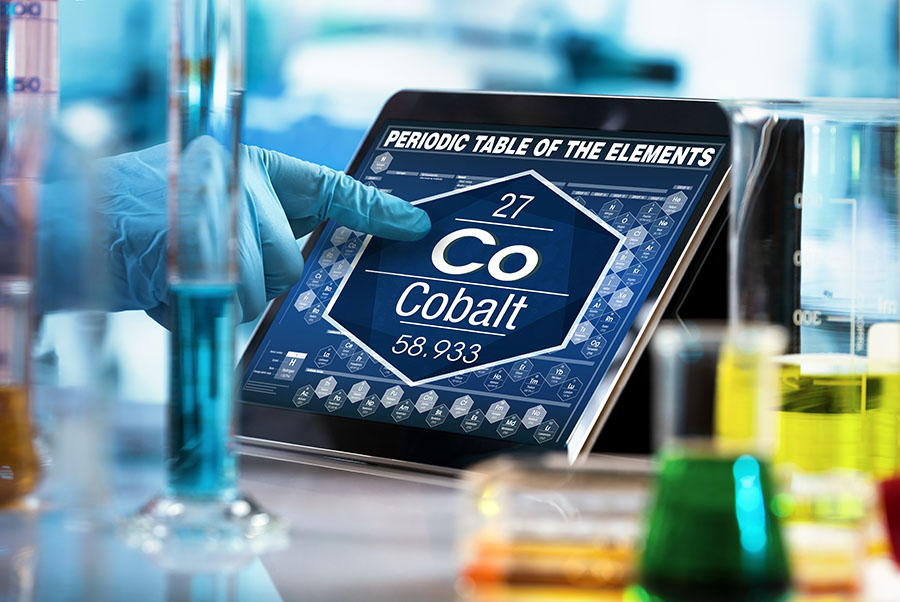The Energy Report: In your Morning Notes in January, you defined much of the energy mining industry as an oligopoly. What do you mean by that?
Chris Berry: Industries like uranium, lithium, vanadium, rare earths or potash typically have a few players at the top that control production and hence pricing. This is a huge barrier to entry for juniors looking to join the ranks of producers.
TER: If the majors are producing enough material to meet today's demand, what are the prospects for the juniors in this market?
CB: It's challenging in the near term because I see supply and demand in balance in many of the metals markets. This is why companies with ample cash on their balance sheets should attract attention—they can survive until demand recovers. Economic growth has slowed across the globe, which implies lower demand and less need for the many juniors out there. To prosper, juniors across any of the energy metals need a competitive advantage, which usually boils down to low production costs. Uranium, for example, is a very interesting case study in this regard. The major producers like Cameco Corp. (CCO:TSX; CCJ:NYSE), AREVA SA (AREVA:EPA) or BHP Billiton Ltd. (BHP:NYSE; BHPLF:OTCPK) have halted expansion plans because of the depressed spot uranium price. To break even on new projects, these companies will need a uranium price closer to, say, $70 per pound ($70/lb). These delays provide a window for near-term producers to either join the ranks of producers or become high-priority takeover targets for majors looking to lower overall costs of production and add reserves.
TER: What does this mean for the junior uranium market? What companies could run the gamut and come out winners, either by being acquired or becoming majors themselves?
CB: Uranium is unique among energy metals and that is why I think we are reading so much about it right now. Security of supply is an increasingly important factor to consider. With ARMZ recently buying out the remaining 49% it didn't already own of Uranium One Inc. (UUU:TSX) for $1.3 billion ($1.3B), I think this is a harbinger of things to come in the uranium space. The Russians realize that the Megatons to Megawatts agreement is set to end at the end of this year and are taking the necessary steps to ensure steady and reliable supply of uranium for their reactor fleet.
Speaking of Megatons to Megawatts, I think the looming end of this program can serve as one of the catalysts for higher uranium prices over the next 12–24 months. The agreement has been in force for 20 years and supplies approximately 24 million pounds (24 Mlb) of reactor-grade material to the U.S. With that set to end by the end of this year, up to 24 Mlb of uranium will go off the market, so there's a looming supply/demand imbalance here. There is one very important factor here that very few people are talking about. It involves the Transitional Supply Contract, which is an agreement signed between USEC and Techsnabexport (TENEX) of Russia to replace the uranium made available to USEC under Megatons to Megawatts. There is some confusion surrounding the exact amount of uranium that this agreement will produce. My research tells me it will be somewhat less than 24 Mlb, so a supply deficit arising from the end of Megatons to Megawatts seems likely, but not for the full 24 Mlb we read about. Combine this with some Japanese reactors coming back on-line in the coming years and the nuclear build out in the emerging world, and you can get a sense of the looming supply crunch.
A number of advanced-stage development companies could serve as interesting takeout targets for majors. One is Uranerz Energy Corp. (URZ:TSX; URZ:NYSE.MKT), which has a project in the Powder River basin in Wyoming called Nichols Ranch. Uranium One has a producing uranium mine not far from Uranerz's deposit and Cameco is active in the basin as well, so the region has clearly been derisked from a production standpoint. The company is fully permitted and should start producing uranium later this year. Of particular significance is a toll processing agreement the company has in place with Cameco. This is a signal that Cameco has vetted Uranerz's operation and Uranerz could very easily integrate into Cameco's supply chain. In my opinion, Uranerz is clearly a takeout target because of this agreement.
Another well positioned company is Ur-Energy Inc. (URE:TSX; URG:NYSE.MKT), which is on the verge of production at its Lost Creek property in southern Wyoming. There are a number of similarities between Ur-Energy and Uranerz in that they will mine and process uranium through a process known as ISR or in-situ recovery. Without getting into too many specifics, this process minimizes the environmental footprint of the mine and also boasts among the lowest costs per pound of production in the industry. Both Ur-Energy and Uranerz will survive the current low uranium price environment as their costs of production are so low relative to their competitors. Ur-Energy should ramp up production to about a 1Mlb/year run rate in 2014.
TER: Uranerz already has a sales contract with major nuclear utilities. Does this give it an advantage in the market?
CB: Yes, it derisks the project substantially. One of the keys to remember in the energy-metals business is that securing an offtake agreement is essential to getting into production. These markets are very different from precious metals, which do not have the same variety of industrial uses. These metals are mined to be used rather than stored. Uranerz does have a leg up on much of the competition because it actually has two sales contracts in place, one with Exelon Corp. (EXC:NYSE) and one with another U.S.-based operator. These are five-year deals with set pricing structures, so both the company and investors can forecast cash flow with a heightened degree of certainty. That is a huge derisking milestone for the company.
TER: You mentioned Ur-Energy. Its Lost Creek facility is scheduled for production in the middle of this year. Is that on track?
CB: Yes it is. The company believes the stock will be rerated once production commences. Again, it's in a reliable geopolitical jurisdiction in Wyoming; it has ample cash on the balance sheet to push forward and its management has experience in the uranium development and production space. So Ur-Energy has cleared a lot of the hurdles many of its competitors have yet to face. And Ur-Energy has four contracts with three utilities (all in place before Fukushima) and that has distinct and obvious advantages as well.
TER: What about European Uranium Resources Ltd. (EUU:TSX.V; TGP:FSE; EUUNF:OTCQX)? Is geography important to the supply and demand equation for uranium?
CB: I think so. European Uranium Resources has a high-grade deposit in Slovakia called Kuriskova and other earlier-stage properties throughout Scandinavia. There's been a great deal of negative press surrounding nuclear energy in Europe, but it's important to remember there are dozens of operating nuclear reactors currently on the continent. Despite what the Germans, Swiss or Italians say, moving from nuclear energy to other base load sources will take decades. According to my research, there is only one currently producing uranium mine in Europe, in the Czech Republic, so I cannot imagine nuclear operators on the continent wouldn't welcome an additional source of supply. European Uranium Resources is a unique story. The Slovak government has voiced support for the development of Kuriskova. AREVA made an equity investment in the company and European Uranium Resources has signed a Memorandum of Understanding with the Slovak government to jointly work toward development at Kuriskova. European Uranium Resources' location, backing and deposit grades offer it a competitive advantage as it pushes toward feasibility and a production decision in the coming years.
TER: Strathmore Minerals Corp. (STM:TSX; STHJF:OTCQX) is located in the United States, where production is substantially below demand, and Korea Electric Power Corp. (KEP:NYSE) owns a piece of Strathmore. Could that location and those connections help this company?
CB: Absolutely. Strathmore has two areas of focus, the Gas Hills district in Wyoming and a deposit called Roca Honda in New Mexico. Wyoming and New Mexico are historically two of the most prolific uranium-production areas in the U.S. and arguably in the world. The company is perfectly placed from a geographic perspective. Korea Electric is one of the largest shareholders of the company and is helping develop the Gas Hills district. The fact that KEP owns equity in the company says a great deal to me in that it has "skin in the game" and more than a passing interest in seeing this deposit develop. Korea Electric can earn-in up to 40% here and so Strathmore can defray equity dilution by receiving project development funding from a partner. A phase 1 drill program on Gas Hills is scheduled to be completed soon, which should provide additional insight into the deposit.
Strathmore's relationship with Sumitomo centers around a 60/40 joint venture in favor of Strathmore. The focus here is the Roca Honda project in New Mexico, which is one of the most prolific uranium producing regions in the world on a historical basis. A decision on the mine permit is expected in 2013 and will be the real catalyst for the project and the company overall.
As with any junior mining company, how you handle dilution is crucial to survivability—especially in the current environment. Strathmore's approach of partnering with two large Asian conglomerates is, I believe, a sound one, as it minimizes share dilution and establishes a relationship with two reliable potential offtake partners once a production decision is made.
TER: Your references to oligopoly pop up quite often in the lithium market. Last year, Galaxy Resources Ltd. (GXY:ASX) acquired Lithium One Inc. and Chengdu Tianqi Industry Group Co. picked up Talison Lithium Ltd. (TLH:TSX). Is this proof of your theory that the only way to proceed in the lithium market is to be bought out by one of the big guys?
CB: I'm not sure if it's the only way to succeed, but I view lithium as a very tough market to break into. Much of my thinking has to do with overall supply and demand balance coupled with the macroeconomic picture we've been discussing. Right now, we're in a period of generally slow or stagnant economic growth in the U.S. and Europe and of slowing growth in Asia. Some of the economic data I study to get a sense of energy metals demand includes PMI surveys. These metrics look bleak right now. Couple this with an extremely challenging financing environment for junior mining companies and you can begin to see why I think the path of least resistance to reward shareholders in the lithium space is through a takeout. I just don't see any room for many more juniors in the current environment. When you're competing in an oligopoly, there are obviously very high barriers to entry. If the price is set by the oligopoly, you have to find other ways to compete, and if you have a deposit that can integrate into a producer's supply chain and lower the overall cost of production, then all of a sudden, you're in business. Lithium is somewhat unique in that lithium production is often accompanied by byproducts including potash, and these byproducts can also help lower overall costs.
TER: Are the energy storage and auto electrification markets growing fast enough to expand this market?
CB: There's a great deal of research and development going into vehicle electrification and energy storage all over the world. China's most recent Five-Year Plan has hundreds of millions of dollars going toward a more sustainable, efficient, electrified society. Anyone who has seen the pictures of the smog choking Beijing can understand why. But it's hard to gauge how quickly a lot of these next-generation technologies are growing and what the tipping point will actually be. The cost must fall for both vehicle electrification and electricity storage before they can become commercially viable, mainstream realities. I'm not just talking about battery costs, but raw-material costs as well.
I watch the costs of raw materials like soda ash or sulfuric acid almost more closely than I do overall battery and lithium carbonate costs because the fluctuating prices of these raw materials have a direct varying effect on the price of the finished good. That said, charging infrastructure is becoming more ubiquitous, and if electricity demand increases in coming years and puts additional stresses on an aging electrical grid, the necessity for energy storage will become much more urgent. The junior exploration companies that wish to become a part of this shift must survive the current environment, however.
TER: What juniors are acquisition targets for the big guys like Rockwood Holdings Inc. (ROC:NYSE) or FMC Lithium Corp. (FMC:NYSE)?
CB: Right now, the companies that are substantially derisked serve as the primary potential acquisition targets for major lithium producers. That would include Canada Lithium Corp. (CLQ:TSX; CLQMF:OTCQX), Orocobre Ltd. (ORL:TSX; ORE:ASX) and Lithium Americas Corp. (LAC:TSX; LHMAF:OTCQX). It doesn't make sense for a major to go into acquisition mode unless the project has been substantially derisked, and all three of these companies have derisked projects, to differing degrees.
Take a look at Rockwood. Though lithium is a tight market, none of the majors, Rockwood included, appear to be in a rush to acquire projects. Rockwood had approximately $1.3B in cash on its balance sheet at the end of 2012, and what it's doing right now is buying back shares, paying down debt and paying existing shareholders a dividend. I'm sure Rockwood management would be very opportunistic if they found a project that they really liked and thought they could integrate it seamlessly into the company's supply chain, but they wouldn't necessarily rush to do this unless lithium demand spiked, which is currently unlikely. Rockwood is the largest producer of lithium compounds in the world. One method to maintaining that dominance is to lock up supply through acquisitions.
Ultimately, one of these potential acquirers would need to decide if it wanted to focus on brines, which resemble a chemistry project, versus a traditional hard rock lithium mining project. Costs differ, but so do the mining and production processes themselves. The age-old debate of "brines versus mines" in lithium is still an open one. A lithium producer must decide which type of mining fits its supply chain most efficiently before making an acquisition.
TER: Do you also consider fertilizer, and potash in particular, to be an oligopoly?
CB: Absolutely. You have a few global producers that dominate supply and by extension price, so any junior wishing to join the ranks of the producers has to do so on the basis of low-cost production. We focus on Saskatchewan, but also on other development stories throughout North America.
TER: What junior companies look promising?
CB: One of the names that we have followed is Passport Potash Inc. (PPI:TSX.V; PPRTF:OTCQX). It has a large deposit in the Arizona's Holbrook basin and has recently released a preliminary economic assessment (PEA) that demonstrated promising economics. The company has also increased the qualified size of its resource and there is room for upside here as well. These were positive catalysts for the company, and this has resulted in a higher share price and good positioning going forward. The next catalyst for the company will be the release of a prefeasibility study by the end of 2013. I am looking for Passport to continue to enhance economics here in the coming months.
TER: Passport's announcement about moving forward on exploring the Holbrook basin property seemed to boost the stock a bit. Did that do the company some good with investors?
CB: I believe you are referring to the agreement Passport signed with the Hopi Tribe in Arizona to jointly explore the Holbrook basin. When you look at a map of Passport's holdings, they are checker-boarded to the south with the Hopi holdings. This presents difficulties in getting a holistic appraisal of the basin. Signing a definitive agreement here is key to getting an understanding of just how big the Holbrook basin could be.
TER: In your opinion, how should investors adjust their portfolios to take advantage of new realities in energy markets?
CB: While I tend to agree with other analysts that the junior mining sector will shrink in size in the coming months, I think it's important to remember that mining is a cyclical business. Discoveries can and will be made even in this environment and patient shareholders can be rewarded. The tide will turn, but it is anyone's guess as to when. Because of this, I am focused on well-capitalized companies in sound geopolitical jurisdictions with experienced management. There are, of course, many other factors to consider, but this is the initial method I use to derisk the companies I am following.
I was recently in Palm Springs at the Cambridge House California Resource Investment Conference and delivered a speech titled, "Four Billion Consumers Can't Be Wrong, Can They?" I hope not. Your question about taking advantage of a new reality I think is a good one because this is indeed a new reality in which we live. Several billion individuals are slowly joining the global middle class and beginning to lead more commodity-intensive lifestyles. Aspiring to achieve a higher quality of life is going to continue despite the sorry state of the junior markets and the uncertain global macroeconomic environment. The longer-term demand picture is intact.
Quality of life is a Pandora's box: Once you experience a leap like driving a car for the first time or using a cell phone or having access to education for free online, that is something that you don't easily give up. In fact, you want more of it. That's why I am focused on the types of energy metals companies I mentioned above.
Overall, the energy-metals space is interesting because it's a combination of traditional exploration and development, technology and R&D, and macroeconomics. I try to formulate a clear view of what's happening in each of these three realms to challenge my thesis and formulate an investment strategy.
TER: Thank you, Chris.
Chris Berry, with a lifelong interest in geopolitics and the financial issues that emerge from these relationships, founded House Mountain Partners in 2010. The firm focuses on the evolving geopolitical relationship between emerging and developed economies, the commodity space and junior mining and resource stocks positioned to benefit from this phenomenon. Chris holds an MBA in finance with an international focus from Fordham University, and a BA in international studies from The Virginia Military Institute.
Want to read more Energy Report interviews like this? Sign up for our free e-newsletter, and you'll learn when new articles have been published. To see a list of recent interviews with industry analysts and commentators, visit our Interviews page.
DISCLOSURE:
1) Tom Armistead conducted this interview for The Energy Report and provides services to The Energy Report as an independent contractor. He or his family own shares of the following companies mentioned in this interview: None.
2) The following companies mentioned in the interview are sponsors of The Energy Report: Uranerz Energy Corp., Ur-Energy Inc., European Uranium Resources Ltd., Strathmore Minerals Corp. and Passport Potash Inc. Streetwise Reports does not accept stock in exchange for its services or as sponsorship payment.
3) Chris Berry: I or my family own shares of the following companies mentioned in this interview: Uranerz Energy Corp. and European Uranium Resources Ltd. I personally or my family am paid by the following companies mentioned in this interview: European Uranium Resources Ltd. My company has a financial relationship with the following companies mentioned in this interview: None. I was not paid by Streetwise Reports for participating in this interview. Comments and opinions expressed are my own comments and opinions. I had the opportunity to review the interview for accuracy as of the date of the interview and am responsible for the content of the interview.
4) Interviews are edited for clarity. Streetwise Reports does not make editorial comments or change experts' statements without their consent.
5) The interview does not constitute investment advice. Each reader is encouraged to consult with his or her individual financial professional and any action a reader takes as a result of information presented here is his or her own responsibility. By opening this page, each reader accepts and agrees to Streetwise Reports' terms of use and full legal disclaimer.
6) From time to time, Streetwise Reports LLC and its directors, officers, employees or members of their families, as well as persons interviewed for articles and interviews on the site, may have a long or short position in securities mentioned and may make purchases and/or sales of those securities in the open market or otherwise.




